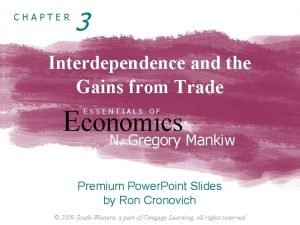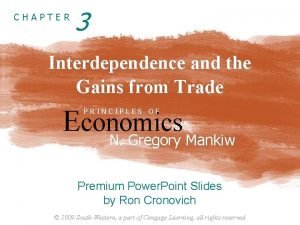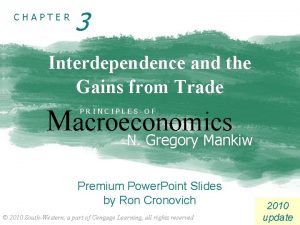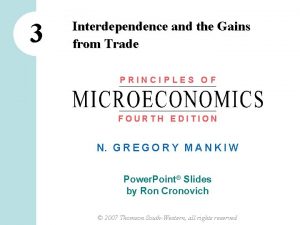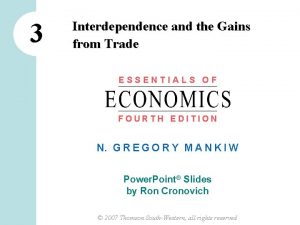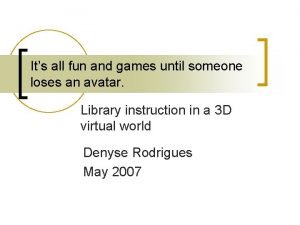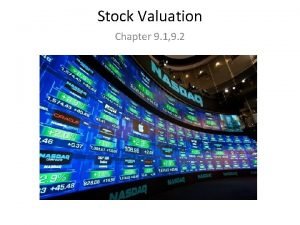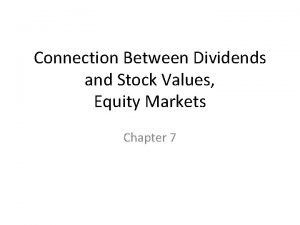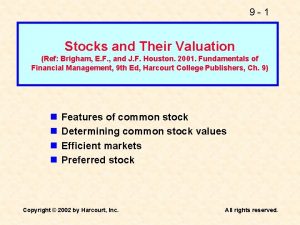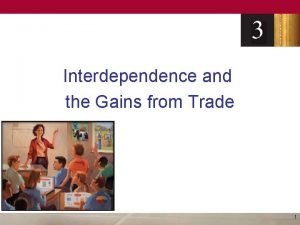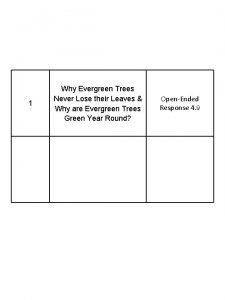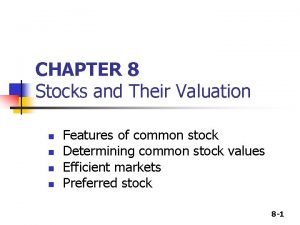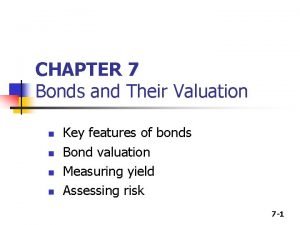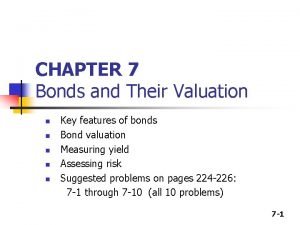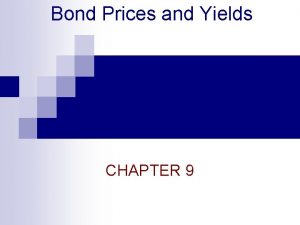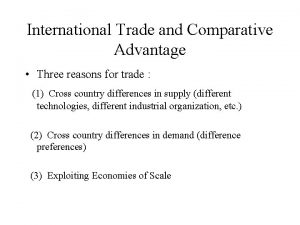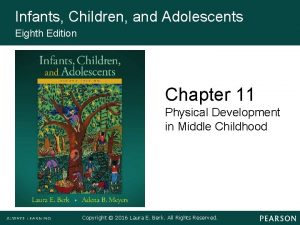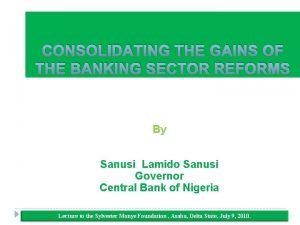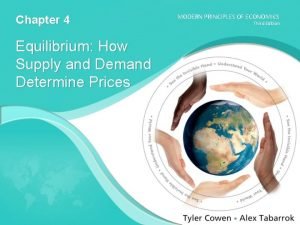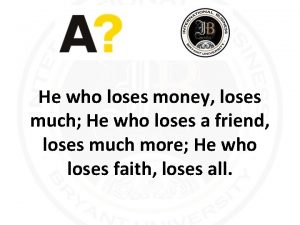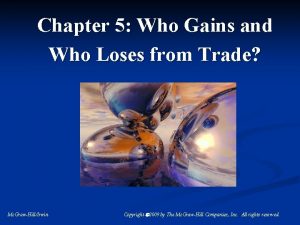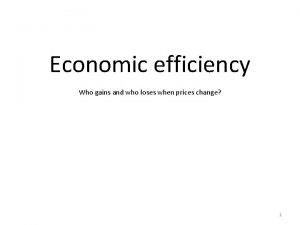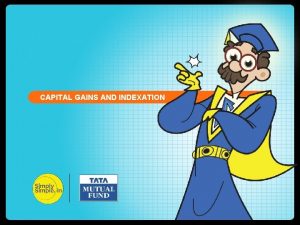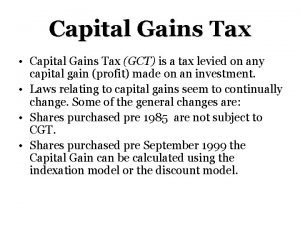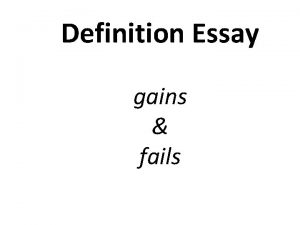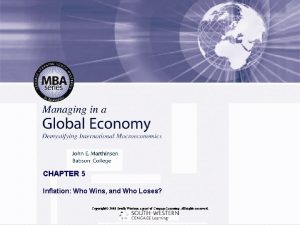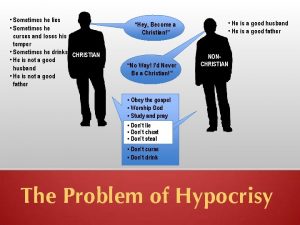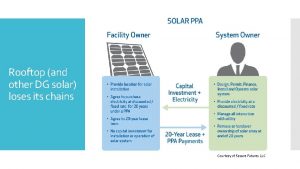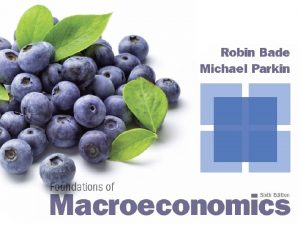Chapter 5 Who gains and who loses from



































- Slides: 35

Chapter 5 Who gains and who loses from trade? Also will look at Appendix B. Link to syllabus

Figure 5. 1 page 71 How free trade affects income distribution

Figure 5. 2 page 72 Effects of Free Trade: Short run versus Long Run

Stolper Samuelson Theorem (p. 72) An event that changes (relative) product prices will raise the return of the factor used intensively in the rising price industry, and lower it for the other factor. Specialized Factor pattern: The more a factor is specialized, the more it stands to gain (or lose) from a change in the (relative) product price.

Stolper and Samuelson, in AA, ~1990

Intern ationa l Factor Price Equali zation • With the shift to free trade: For each factor, its rate of return becomes more similar between countries. Under ideal conditions, the factor’s real rate of return is the same in different countries. • Example: Labor. Ø With no trade, the wage rate is high in the laborscarce country (e. g. , US). The wage rate is low in the labor-abundant country (R. o. W. ). Ø With free trade, the import of labor-intensive products pushes the wage rate down in the laborscarce country (e. g. US). The export of laborintensive products pulls the wage rate up in the labor-abundant country (R. o. W. ).

Figure 5. 3 page 77 Shares of the world’s factor endowments, 2007 -2010


Figure 5. 4 page 80. U. S. trade: consistent with H-O Theory?

Figure 5. 5 page 84. Schematic View of Factor Content of U. S. Exports

Figure 5. 6 page 85 Factor content of Canada’s exports

China: Value of Exports and Imports, 1976 -2006 p. 83

China’s Exports and Imports, 2009. p. 82

Land/Labor and Wage/Rent Ratios, 1870 -1940. Great Britain, Egypt, Thailand, and Uruguay Land/Labor 1870 Wage/Rent 1940 1870 Source: Williamson, NBER #7784 1940

EYE ON THE GLOBAL ECONOMY Persistent Gaps or Convergence? Back to list Bade/Parki P. 241

EYE ON THE GLOBAL ECONOMY Persistent Gaps or Convergence? Very interesting Back to list Bade/Park P. 241

Gini Coefficient of Income Inequality in the U. S. Inequality in US 0, 50 0, 48 0, 45 0, 43 0, 40 Gini 0, 38 0, 35 0, 33 2010 1950 1960 1970 1980 1990 2000 (30) 0, 30 Source: US Gov’t http: //www. census. gov/hhes/www/income/data/historical/families/index. htm

Sala-I-Martin 4 Global Income Inequality, using Gini Coefficient

Sala-I-Martin’s Estimates China India US QJE 2006

Sala-I-Martin 2

World Distribution of Income

World Income Inequality 1970 -2000 Source: Sala-i-Martin QJE 2006

Regional Poverty Rates 1970 -2000 Source: Sala-i-Martin QJE (2006)

Suggested reading in Chapter 5 (p. 88). Names from UM-Ann Arbor campus

Figure B. 1 page 670 Production Functions with Fixed Factor Proportions

Figure B. 2 page 671 Edgeworth Bowley Box Diagram: Fixed factor proportions

Figure B. 3 Page 671 Production Possibility Curve, Fixed Factor Proportions

Both curves together p. 671

Figure B. 4 page 672 PPC Curve with constant opportunity costs

Figure B. 5 page 673 Variable factor proportions

Question page 89.

Question 10 p. 90


Sala-I-Martin’s Estimates

Sala-I-Martin 3
 Chapter 3 interdependence and the gains from trade
Chapter 3 interdependence and the gains from trade Chapter 3 interdependence and the gains from trade summary
Chapter 3 interdependence and the gains from trade summary Chapter 3 interdependence and the gains from trade answers
Chapter 3 interdependence and the gains from trade answers Interdependence and the gains from trade chapter 3
Interdependence and the gains from trade chapter 3 Chapter 3 interdependence and the gains from trade summary
Chapter 3 interdependence and the gains from trade summary Chapter 3 interdependence and the gains from trade
Chapter 3 interdependence and the gains from trade It's all fun and games until someone loses an i
It's all fun and games until someone loses an i Dividend yield and capital gains yield
Dividend yield and capital gains yield Current dividend
Current dividend Dividend yield and capital gains yield
Dividend yield and capital gains yield The most dramatic gains in height and weight occur
The most dramatic gains in height and weight occur Interdependence and the gains from trade
Interdependence and the gains from trade Why does percy leave grover at the bus station?
Why does percy leave grover at the bus station? He who loses his life finds it
He who loses his life finds it What tree never loses its leaves
What tree never loses its leaves What will happen if tom robinson loses his last appeal?
What will happen if tom robinson loses his last appeal? Engine rotation direction from front
Engine rotation direction from front When did wwi begin
When did wwi begin Fldoe learning gains
Fldoe learning gains Italian gains in ww1
Italian gains in ww1 Capital gain yield
Capital gain yield Junk bond ratings
Junk bond ratings Expected capital gains yield formula
Expected capital gains yield formula Junk bond rating
Junk bond rating Gains rapides
Gains rapides Gains rapide
Gains rapide Army code of ethics
Army code of ethics Law of comparative advantage
Law of comparative advantage Infants and children 8th edition
Infants and children 8th edition As a fluid gains speed, its internal pressure
As a fluid gains speed, its internal pressure State eight gains of the reform on the banking sector
State eight gains of the reform on the banking sector How to calculate unexploited gains from trade
How to calculate unexploited gains from trade Oxidizing agent example
Oxidizing agent example Chapter 7 ionic and metallic bonding chapter answer key
Chapter 7 ionic and metallic bonding chapter answer key Chapter 7 ionic and metallic bonding answer key
Chapter 7 ionic and metallic bonding answer key Ionic compound properties
Ionic compound properties
